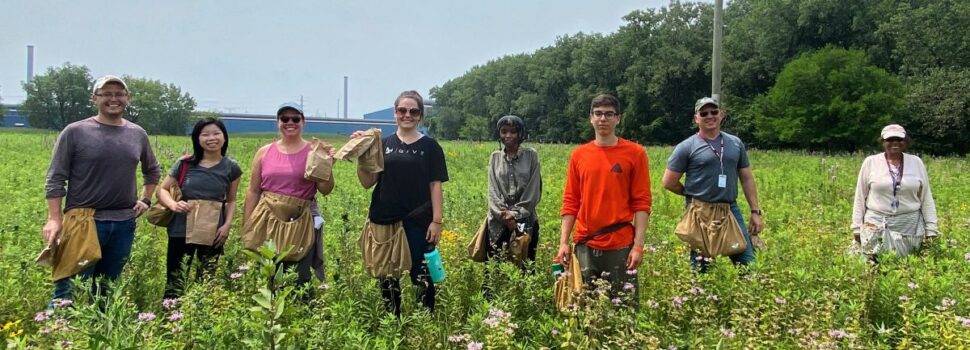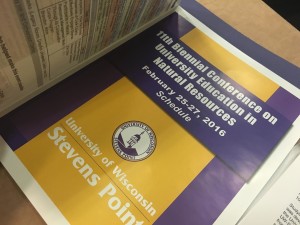By Gloria Orozco, Assistant Crew Manager at Friends of the Forest Preserves
Back in February of 2016, I was given the opportunity to go and present at the 11th Biennial Conference on University Education in Natural Resources. I presented along with Alice Brandon, Resource Management Administrator, and John McCabe, Resource Management Director of the Forest Preserves of Cook County. I was excited and nervous at the same time, not so much about presenting, but about the people I would meet there. I didn’t really know what to expect, but I never thought I would come back feeling the way I did.
Being part of the conference, we were able to take part in the workshops and presentations being offered. At the beginning of the day, during the breakfast, I quickly realized who this conference was for. They were Natural Resources and Arborist professors from across the country. I felt somewhat intimidated, but ready for what the day had in store.
Presentations that interested me had to do mostly with diversity in the classrooms of universities. Being part of Friends of the Forest Preserves, I have become really interested in diversity in environmental careers and in finding ways to bring people from different backgrounds to come together. I must say, these presentations were not what I expected.
Don’t get me wrong, the conference was great and I am sure that the professors were able to leave with new ideas for the classroom. However, it gave me insight on the diversity problems in universities. I remember one in particular because of how angry it made me. There were around twenty people in the room. As I looked around, I realized I was the only person of color in the room. I felt eyes on me as they all began to discuss why minorities don’t enroll in their universities. I eventually got the nerve to say something as I listened to one of the professors talk about how he has gone out to communities of minorities to try to convince them to visit the campus and trying to make a connection with them. All this is great, but then he said minorities just weren’t interested or didn’t care.
Don’t care? What are you talking about?!
This professor didn’t mean any harm, he was just speaking from his point of view. I suppose that’s how it can be interpreted if you go out to look for students and don’t get a good turn out. However, there are more factors to consider. For example, did you offer transportation opportunities? A lot of these communities live from paycheck to paycheck, sometimes with no savings. Even if they are interested, transportation could be a factor that prevents them from visiting your campus. Did you go out to their community more than once and actually make a connection? It is not easy. It is not something you do in a day. It takes time and effort. Communities need to be visited more than once to make an actual connection with them. Don’t pretend to get what each of these students are going through, just listen and try to offer options.
Having been part of this conference, I learned that there is still a lack of education and or communication with people who are different from us. We like to assume the reasons behind the way people are behaving without sitting down and talking to them, or taking the time to learn more. This is a problem not only in universities, but across the country. Let’s try to learn more about each other. Let’s stop assuming, and start communicating.


